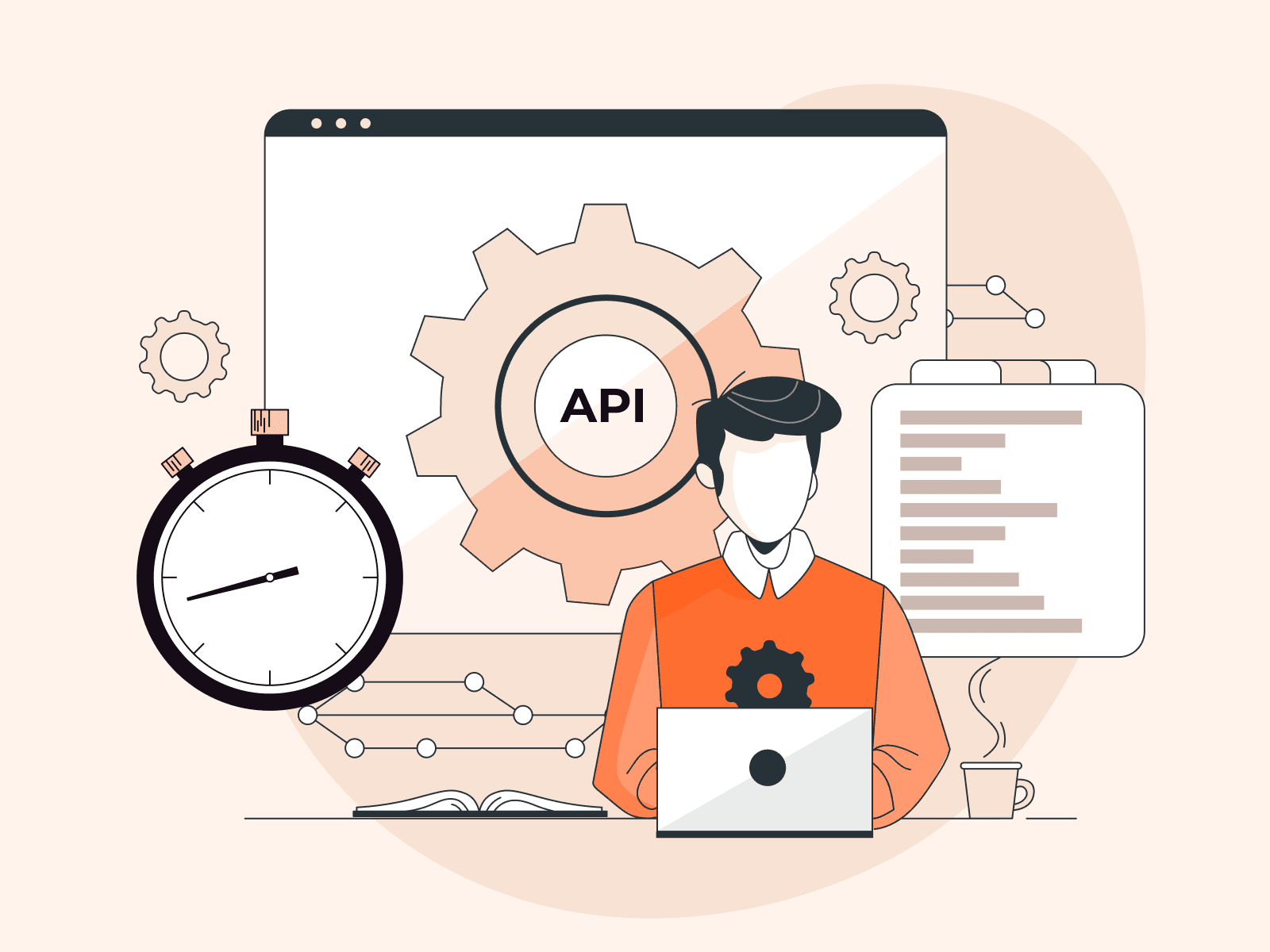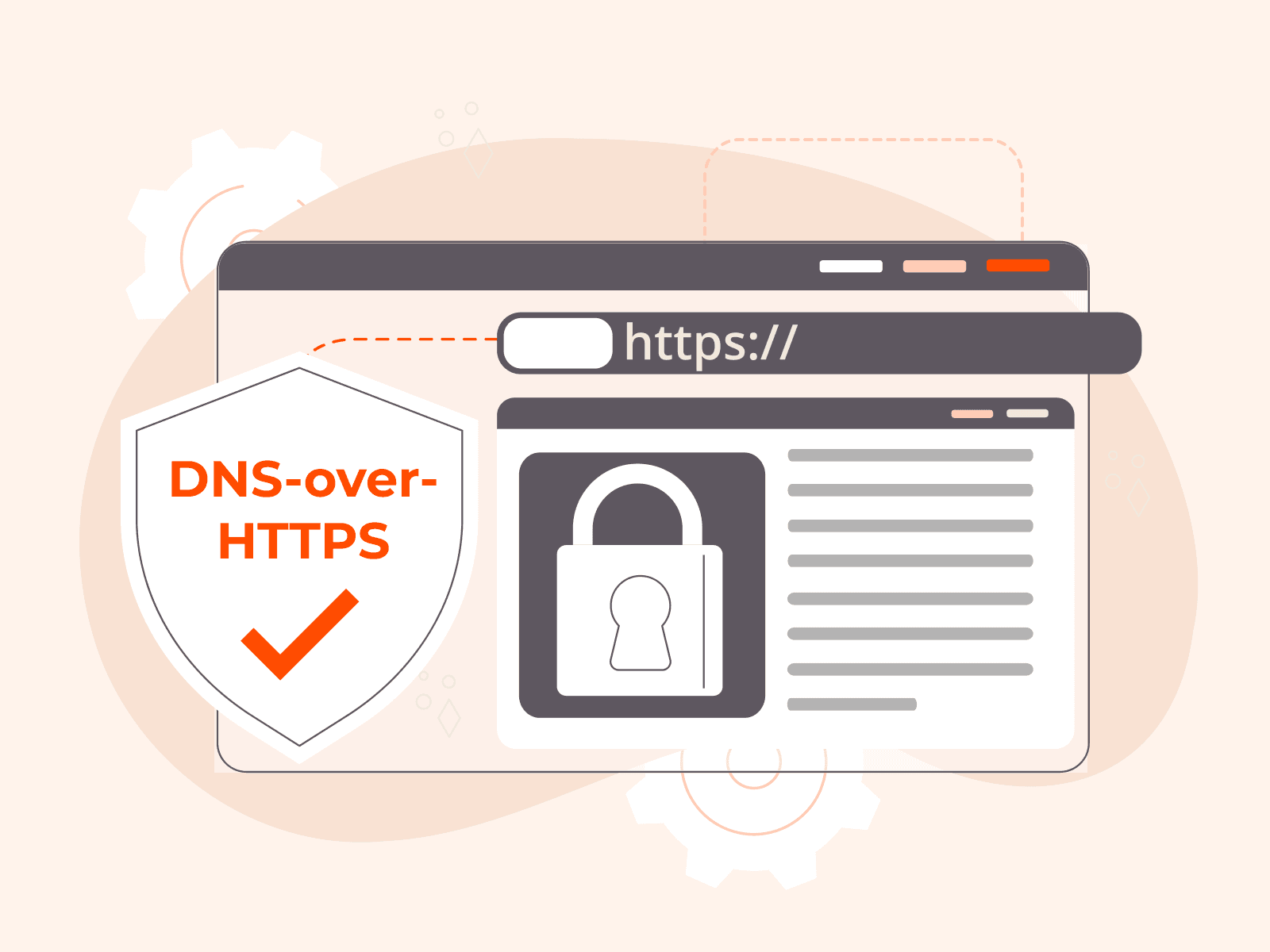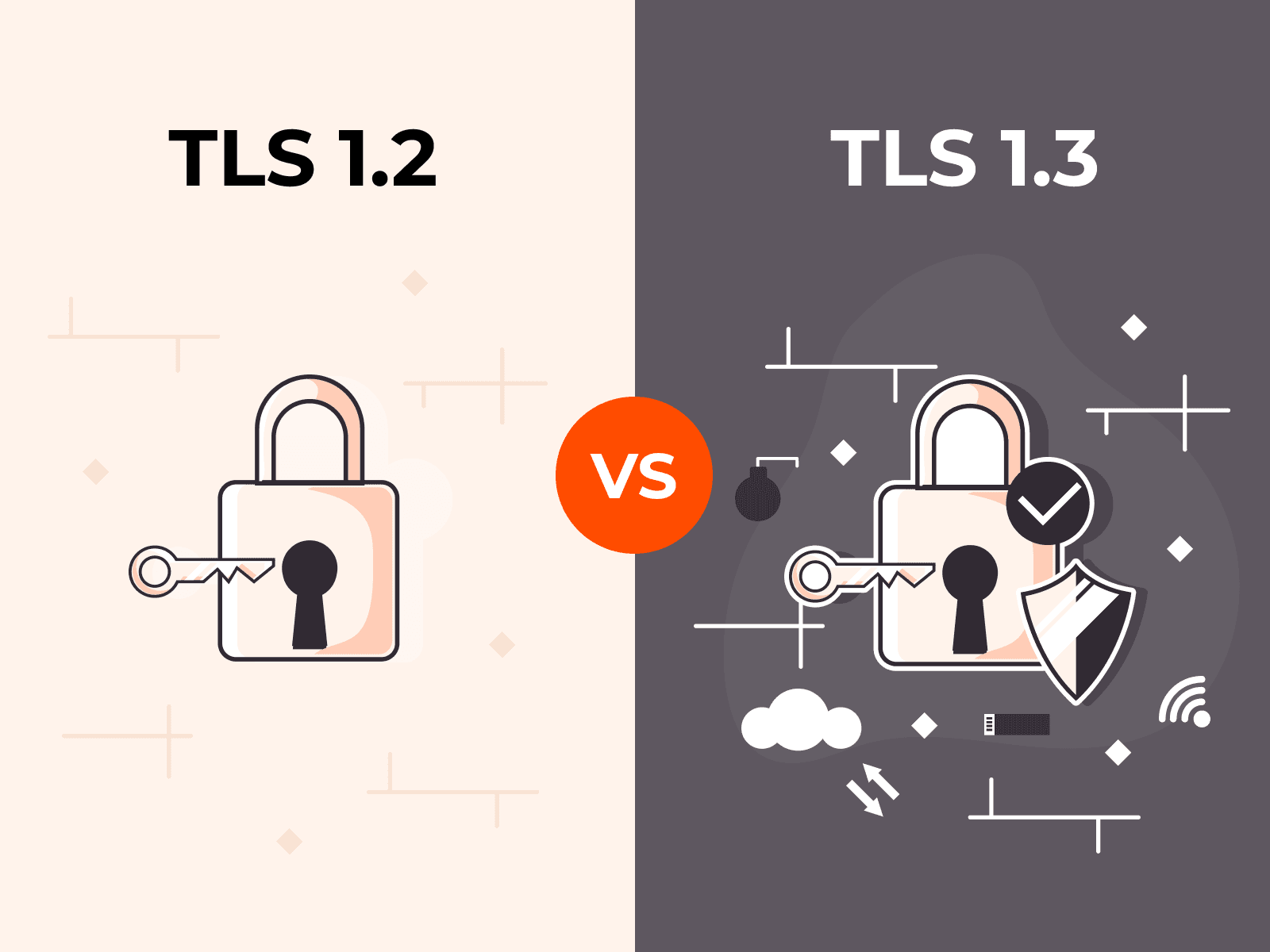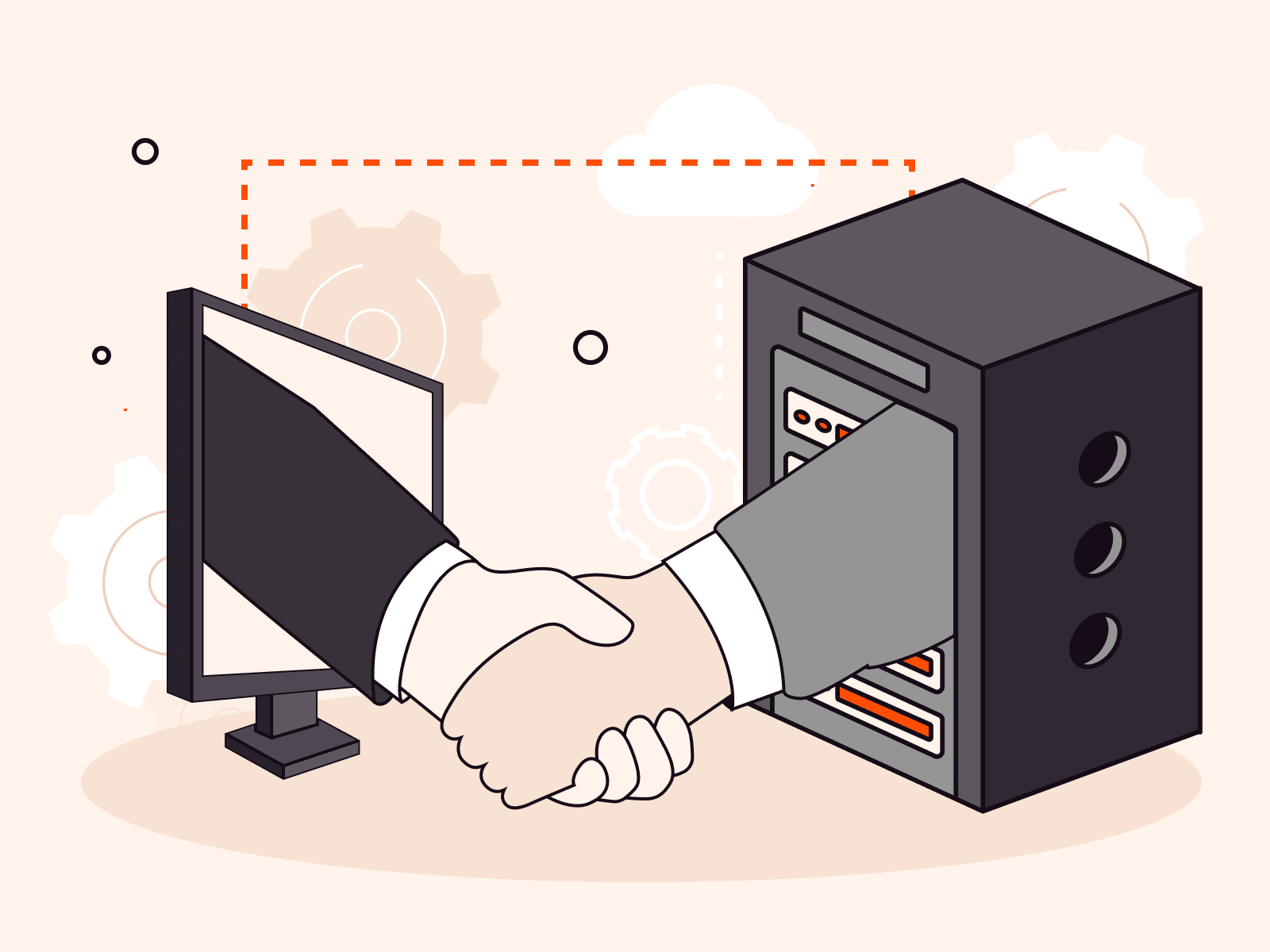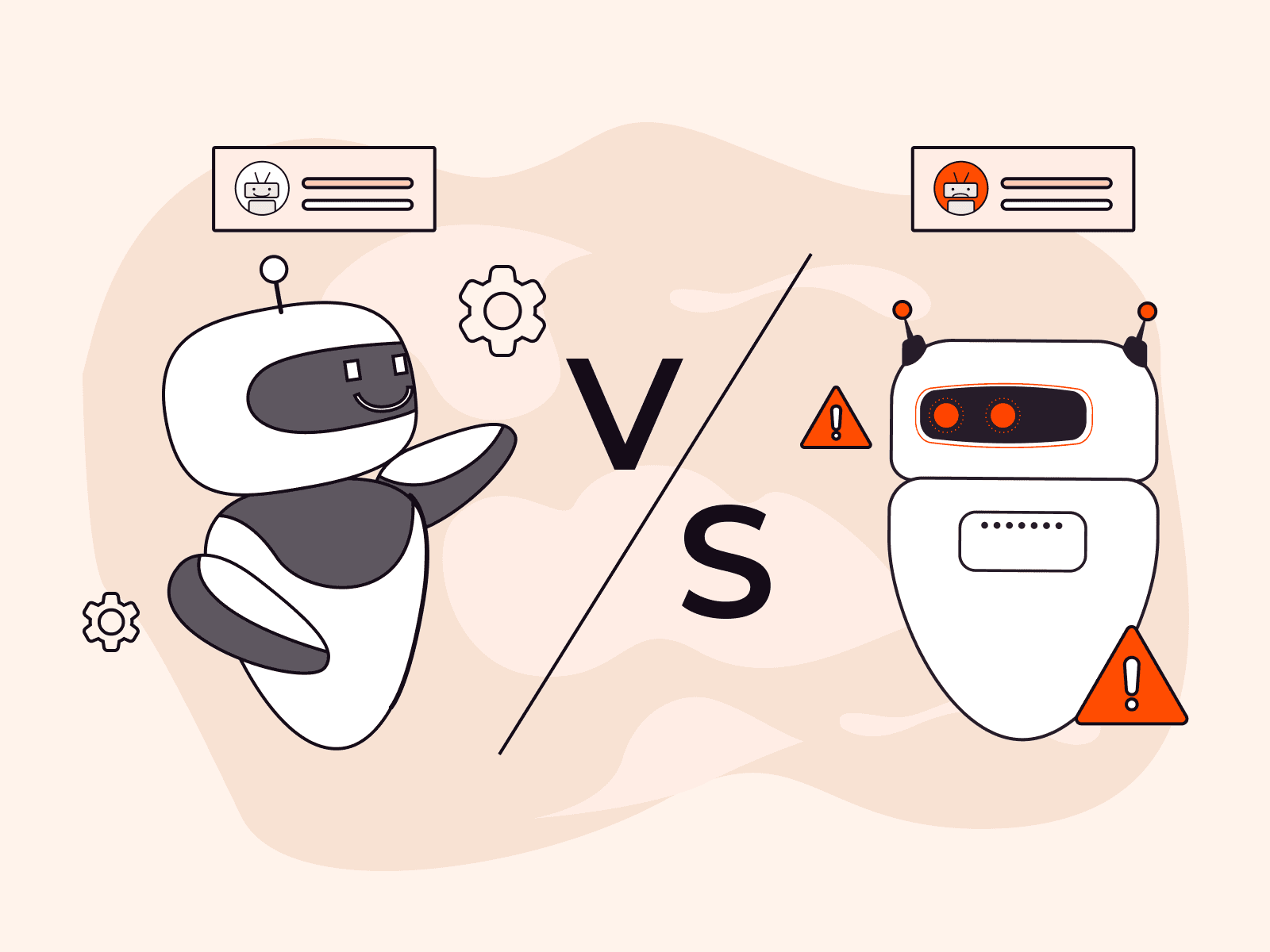API rate limiting is the process of controlling how many requests a user or system can make to an API within a specific timeframe. This mechanism caps transactions to prevent server overload and ensures fair distribution of resources across all users.
Rate limiting serves as both a security measure and a quality control tool for modern APIs. It protects systems from abuse by restricting excessive requests from a single source. This helps prevent brute force attacks, credential stuffing, and denial-of-service attempts.
The GitHub REST API, for example, allows a maximum of 5,000 requests per hour per authenticated user to maintain system stability.
The necessity of rate limiting becomes clear when you consider resource allocation and cost management. Without limits, a single user can monopolize API resources, degrading performance for everyone else. This is especially important for multi-tenant platforms and tiered subscription models, where fair usage directly impacts service quality and revenue.
Rate limiting works through different algorithms that track and restrict request volumes.
These systems monitor incoming requests and apply rules based on factors like IP address, API key, or user account. Typical limits range from tens to thousands of requests per second, depending on the provider and service tier. The Zoom API, for instance, varies its rate limits by endpoint but typically restricts requests per minute per account.
Understanding rate limiting is important because it affects how you design, build, and maintain API integrations.
Proper implementation protects your infrastructure from overload while ensuring consistent performance for legitimate users. For technical teams, this means more reliable systems and better resource planning.
What is API rate limiting?
API rate limiting controls the number of requests a user or application can make to an API within a specific timeframe. For example, you might set limits at 5,000 requests per hour or 100 requests per minute.
This mechanism protects your APIs from overload and abuse. It ensures fair resource distribution across all users while maintaining consistent performance for everyone accessing the API. Rate limiting works as both a security measure (defending against credential stuffing and denial-of-service attacks) and a quality control tool that keeps your services running smoothly.
Why is API rate limiting necessary?
API rate limiting prevents server overload and ensures fair distribution of resources across all users. Without rate limits, a single client could flood an API with requests, consuming excessive bandwidth and processing power that degrades performance for everyone else. This protection is crucial for multi-tenant systems, where multiple users share the same infrastructure.
Rate limiting also defends against malicious attacks. It blocks brute force attempts, credential stuffing, and denial-of-service attacks by limiting the number of requests that can originate from a single source. For example, GitHub's REST API caps authenticated users at 5,000 requests per hour to prevent abuse while maintaining service stability.
Rate limiting ensures consistent API performance as demand grows. By capping transactions per second or data volume per user, providers maintain steady response times even during traffic spikes.
This controlled access protects backend systems from unexpected load while keeping the API responsive for legitimate users across different subscription tiers.
How does API rate limiting work?
API rate limiting works by monitoring and controlling the number of requests a client can make to an API within a defined time window. The system tracks each incoming request, identifies the client through their API key, IP address, or authentication token, and checks whether they've exceeded their allowed quota. If they're within limits, the request processes normally.
If they've hit their cap, the API returns an error response (typically HTTP 429 "Too Many Requests") and blocks the request until the time window resets.
Here's how the process works: When a request arrives at the API gateway, the system logs the client identifier and timestamps the request. It then compares this against stored rate limit rules, which specify thresholds like 100 requests per minute or 5,000 requests per hour.
Different algorithms handle this counting differently. Token bucket algorithms refill available requests at steady rates. Fixed window counters reset at specific intervals. Sliding window logs track exact request timestamps for precise control.
Rate limiting protects APIs from overload by preventing any single client from consuming too many resources. It blocks brute force attacks, where attackers try thousands of password combinations rapidly. It stops denial-of-service attempts that flood servers with requests. It ensures fair access across all users, which is especially critical for multi-tenant platforms where one client's excessive usage could degrade performance for everyone else.
What are the main rate limiting algorithms?
Rate limiting algorithms refer to the technical methods used to control and measure API request rates within defined time windows. Here are the main rate limiting algorithms.
- Token bucket: This algorithm adds tokens to a bucket at a fixed rate. Each request consumes one token. When the bucket is empty, requests are rejected until new tokens are added. It allows brief bursts of traffic while maintaining average rate limits.
- Leaky bucket: Requests enter a queue and are processed at a constant rate, like water dripping from a bucket with a small hole. This algorithm smooths out traffic spikes by enforcing a steady outflow rate. It's ideal when you need predictable, uniform request processing.
- Fixed window: This method counts requests within fixed time intervals, such as allowing 1,000 requests per hour starting at each hour mark. The counter resets at the start of each new window. It's simple to implement but can allow twice the limit if users time requests at window boundaries.
- Sliding window log: The system maintains a timestamped log of each request. It counts only those within the current time window. This approach provides precise rate limiting without boundary issues. It requires more memory to store individual request timestamps.
- Sliding window counter: This hybrid combines fixed window counters with weighted calculations from the previous window. It approximates sliding window log accuracy with less memory overhead. The algorithm weighs the previous window's count based on time overlap with the current window.
- Concurrent requests: This algorithm limits the number of simultaneous active requests rather than counting total requests over time. It's useful for protecting resources that can only handle a specific number of parallel operations. The limit decreases when requests complete and increases when new ones start.
What are the different rate limiting methods?
Rate limiting methods refer to the specific algorithms and techniques used to control and restrict the number of API requests within defined time frames. Here are the different rate limiting methods.
- Fixed window: This method divides time into fixed intervals (like one-minute blocks) and allows a set number of requests per interval. It's simple to implement, however, each window resets at a predetermined time, making it vulnerable to traffic spikes at window boundaries.
- Sliding window log: The system maintains a timestamped log of each request and counts only those within the rolling time window. This approach provides precise rate limiting but requires more memory to store request timestamps for each user.
- Sliding window counter: This hybrid method combines the simplicity of a fixed window with the accuracy of a sliding window. It weighs requests from the current and previous windows, balancing memory efficiency with smoother rate enforcement across window transitions.
- Token bucket: Users receive a bucket filled with tokens that replenish at a steady rate. Each request consumes one token. This method allows brief traffic bursts while maintaining long-term rate control, making it ideal for APIs with variable traffic patterns.
- Leaky bucket: Requests enter a queue that processes them at a constant rate, like water dripping from a bucket with a hole. The queue smooths out traffic spikes and enforces steady request processing. However, it can delay legitimate requests during high traffic.
- Concurrent rate limiting: This method restricts the number of simultaneous active requests, rather than the total number of requests over time. It prevents resource exhaustion from long-running requests and works well for APIs with expensive operations.
What are the benefits of implementing API rate limiting?
API rate limiting gives organizations control over how many requests users can make to their APIs within specific timeframes. Here are the key benefits.
- Server protection: Rate limiting prevents system overload by capping requests at manageable levels. Your servers stay responsive even during traffic spikes or unexpected demand surges.
- Fair resource distribution: Rate limits ensure no single user monopolizes API capacity. This matters especially for multi-tenant platforms where all clients need consistent access regardless of other users' activity.
- Security against attacks: Rate limiting blocks brute force attempts, credential stuffing, and denial-of-service attacks by restricting excessive requests from single sources. This defense layer stops malicious actors before they can damage your infrastructure.
- Cost control: Capping API requests prevents unexpected infrastructure costs from runaway usage or automated scripts. You can predict and manage server capacity needs more accurately.
- Performance consistency: Rate limits maintain steady response times across all users as demand grows. Your systems handle gradual scaling without degrading service quality for existing clients.
- API monetization support: Rate limiting enables tiered pricing models, where different subscription levels receive varying request allowances. This creates clear value distinctions between free, standard, and premium API access tiers.
- Resource planning: Historical rate limit data shows actual usage patterns. You can make informed decisions about infrastructure investments, identify which endpoints require more capacity, and pinpoint underutilized resources.
What are common challenges of API rate limiting?
Common challenges with API rate limiting refer to the obstacles and difficulties developers and organizations face when implementing, configuring, and managing request limits on their APIs. The common challenges with API rate limiting are listed below.
- Choosing appropriate limits: Setting rate limits too low can frustrate legitimate users while blocking valid traffic. Set them too high and you won't protect against abuse. Finding the right balance requires analyzing usage patterns and understanding peak demand periods.
- Distributed system complexity: Rate limiting across multiple servers and regions creates synchronization problems. Each node must accurately track request counts, but this distributed state management can lead to inconsistent enforcement. Users may exceed limits before all servers update their counts.
- User experience degradation: When users hit rate limits, they receive error responses that disrupt their workflow and create frustration. Poor error messages or lack of retry guidance makes things worse, leaving users uncertain about when they can resume requests.
- Identifying legitimate users: Distinguishing between malicious actors and legitimate high-volume users is difficult, especially when multiple users share IP addresses behind corporate firewalls or NAT gateways. This challenge increases when APIs serve both human users and automated systems with different usage patterns.
- Managing multiple limit tiers: APIs with different subscription levels must enforce varied rate limits for free, basic, and premium users. This tiered approach requires complex tracking logic and clear communication about each tier's restrictions.
- Handling burst traffic: Legitimate use cases often require short bursts of requests that exceed average limits, such as batch processing or data synchronization. Strict rate limiting blocks these valid patterns. Developers must then implement complex retry logic or request queuing.
- Monitoring and alerting: Tracking rate limit violations across thousands of users generates massive amounts of data that's difficult to analyze. Identifying patterns that indicate attacks versus normal usage spikes requires sophisticated monitoring tools and clear metrics.
How to implement API rate limiting
You implement API rate limiting by choosing a rate limiting algorithm, defining request thresholds, and enforcing those limits at the API gateway or application level.
- First, select a rate limiting algorithm that matches your needs. Token bucket works well for handling burst traffic while maintaining average rates. Fixed window counting is more straightforward but less precise. Sliding window log provides the most accuracy but requires more memory to track individual request timestamps.
- Next, define your rate limit thresholds based on user tiers and API capacity. Set specific limits, such as 100 requests per minute for free users and 5,000 requests per hour for premium accounts. Test these limits under load to confirm your infrastructure can handle the maximum allowed request rate.
- Then, choose your rate limiting identifier to track requests. You can limit by API key for authenticated users, by IP address for public endpoints, or by user account for multi-tenant applications. API keys provide the most control, preventing users from bypassing limits by switching IP addresses.
- After that, add rate limit headers to your API responses so clients know their current status. Include X-RateLimit-Limit for the maximum requests allowed, X-RateLimit-Remaining for requests left in the current window, and X-RateLimit-Reset for when the limit resets.
- Set up proper error responses when clients exceed their limits. Return HTTP 429 (Too Many Requests) status code with a clear message explaining the limit and reset time. Include a Retry-After header to tell clients when they can make requests again.
- Finally, add monitoring and alerting for rate limit violations. Track which clients hit limits most frequently and adjust thresholds if legitimate users face restrictions. Monitor for patterns that suggest abuse attempts like rapid-fire requests from single sources. Start with conservative limits and adjust based on real usage patterns.
Don't set overly restrictive thresholds that frustrate legitimate users.
What are API rate limiting best practices?
API rate limiting best practices are the proven methods and strategies organizations use to implement effective rate controls on their APIs. Here are the key best practices.
- Define clear limits: Set specific request thresholds based on your API's capacity and user tiers. Start with conservative limits, such as 100 requests per minute for free users and 1,000 for paid accounts. Then adjust based on actual usage patterns.
- Choose the right algorithm: Select a rate limiting algorithm that matches your needs. Token bucket works well for burst traffic, leaky bucket for steady flow, or sliding window for precise control. Each algorithm has different trade-offs between accuracy and resource consumption.
- Apply multiple limit layers: Implement rate limits at different levels, including per user, per API key, per IP address, and per endpoint. This multi-layer approach prevents abuse while maintaining flexibility for legitimate high-volume users.
- Return clear error responses: Send HTTP 429 status codes with detailed headers showing the limit, remaining requests, and reset time. Include retry-after information so clients know exactly when they can make requests again.
- Monitor and alert: Track rate limit hits, rejected requests, and usage patterns across all endpoints. Set up alerts when users consistently hit limits. This may indicate a legitimate need for higher tiers or potential abuse attempts.
- Document limits publicly: Publish your rate limits, algorithms, and policies in API documentation so developers can design their applications accordingly. Include examples of how to handle rate limit responses and implement exponential backoff.
- Implement gradual enforcement: Start with logging and warnings before implementing rigid enforcement, allowing users time to adjust. This approach reduces friction and helps identify issues with your limit settings before they impact production applications.
- Use distributed rate limiting: Store rate limit counters in distributed caches like Redis when running multiple API servers. This ensures accurate counting across your infrastructure and prevents users from bypassing limits by hitting different servers.
Frequently asked questions
What happens when an API rate limit is exceeded?
When an API rate limit is exceeded, the server returns an HTTP 429 "Too Many Requests" error. It then blocks further requests until the rate limit window resets.
The response typically includes headers that show when you can retry, such as Retry-After or X-RateLimit-Reset. This lets clients pause and resume requests automatically.
How do I choose the correct rate limit for my API?
Start with conservative limits based on your expected traffic patterns. For standard users, 100 requests per minute is a solid baseline. You can adjust upward as you collect monitoring data and gain a better understanding of your actual usage.
When setting your limits, consider these key factors: average request size, peak usage times, and database query costs. You'll also want to consider whether read and write operations require different thresholds. Read operations typically handle higher volumes, while writes often need tighter controls to protect your infrastructure.
Match your rate limits to your user tiers and infrastructure capacity. Monitor performance closely during the first few weeks, then fine-tune your limits based on real-world data.
What's the difference between rate limiting and API throttling?
Rate limiting and API throttling are the same thing. Both control the number of API requests you can make within a specified timeframe. This prevents system overload and ensures fair resource distribution across all users.
Can rate limiting affect legitimate users?
Yes, rate limiting can temporarily block legitimate users if they exceed request thresholds. This typically occurs during traffic spikes or when users share IP addresses with high-volume requesters. You can reduce this impact by setting reasonable thresholds and providing clear error messages that help real users understand what's happening.
How do I communicate rate limits to API consumers?
Use HTTP response headers to communicate rate limits clearly. Return three key headers with each API response: X-RateLimit-Limit (total allowed requests), X-RateLimit-Remaining (requests left), and X-RateLimit-Reset (time until the limit resets). When consumers exceed their limits, return a 429 status code with a Retry-After header that shows exactly when they can resume requests.
What HTTP status code is used for rate limiting?
HTTP status code 429 (Too Many Requests) is the standard code for rate limiting. When a client exceeds the allowed number of requests, the server returns this code to signal they need to wait before trying again. The response typically includes a Retry-After header that indicates to the client when they can retry.
Should rate limits differ for authenticated vs. unauthenticated requests?
Yes, authenticated requests should have higher rate limits than unauthenticated ones. Here's why: authenticated users are identifiable and traceable, which means you can monitor their behavior and hold them accountable. They typically have legitimate use cases that justify more API access, making them lower-risk than anonymous users.
Related articles
Subscribe to our newsletter
Get the latest industry trends, exclusive insights, and Gcore updates delivered straight to your inbox.
